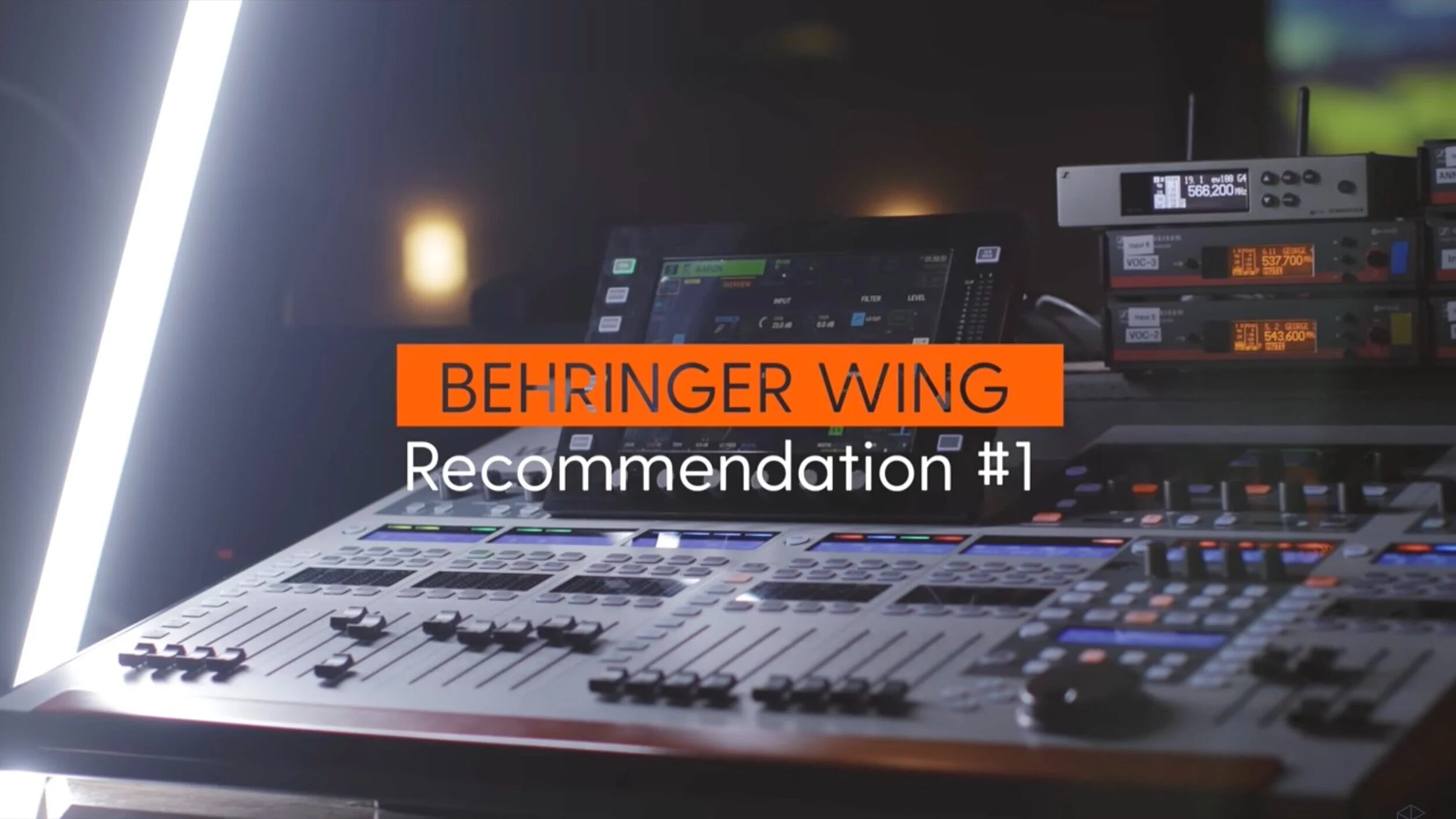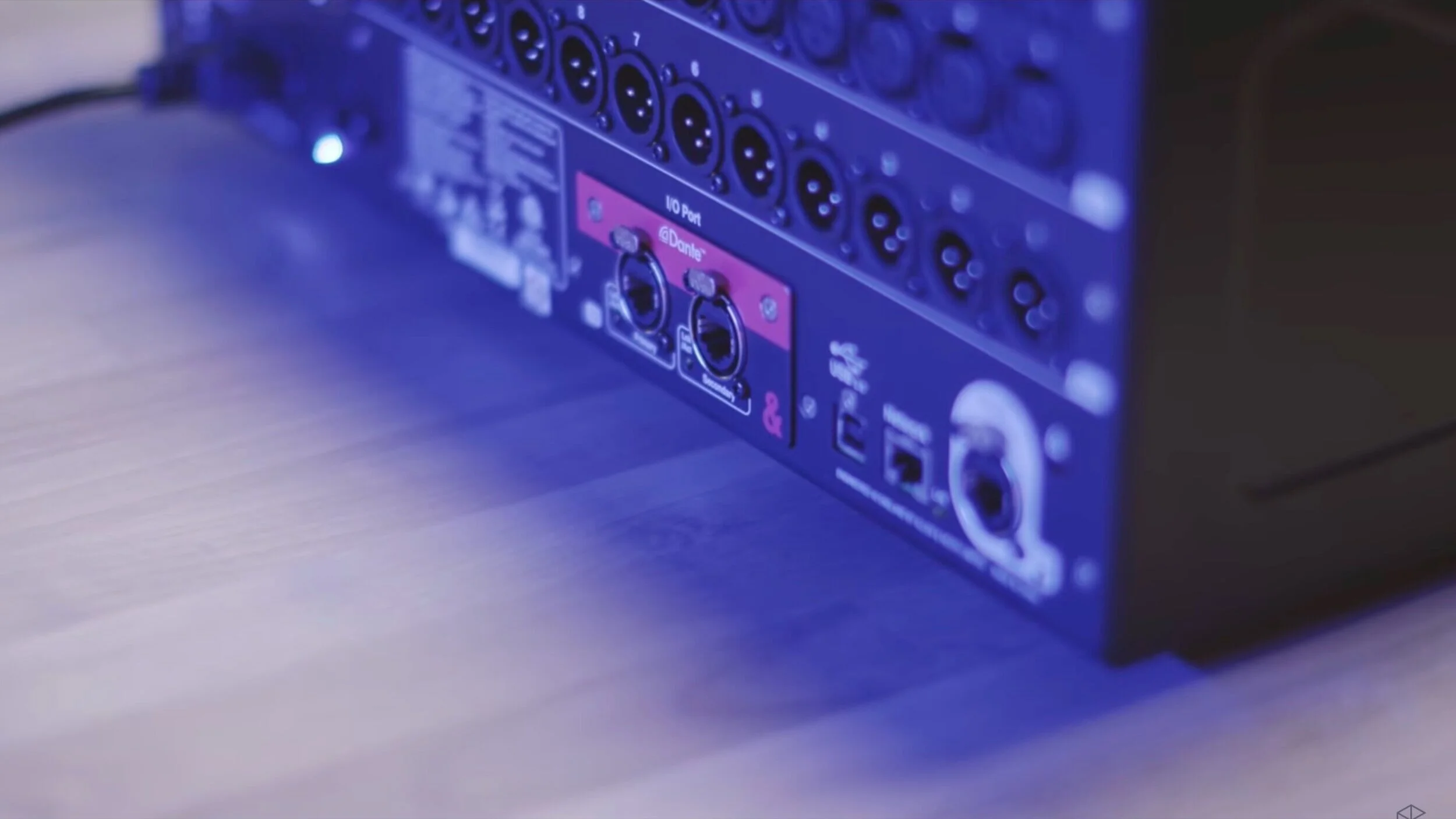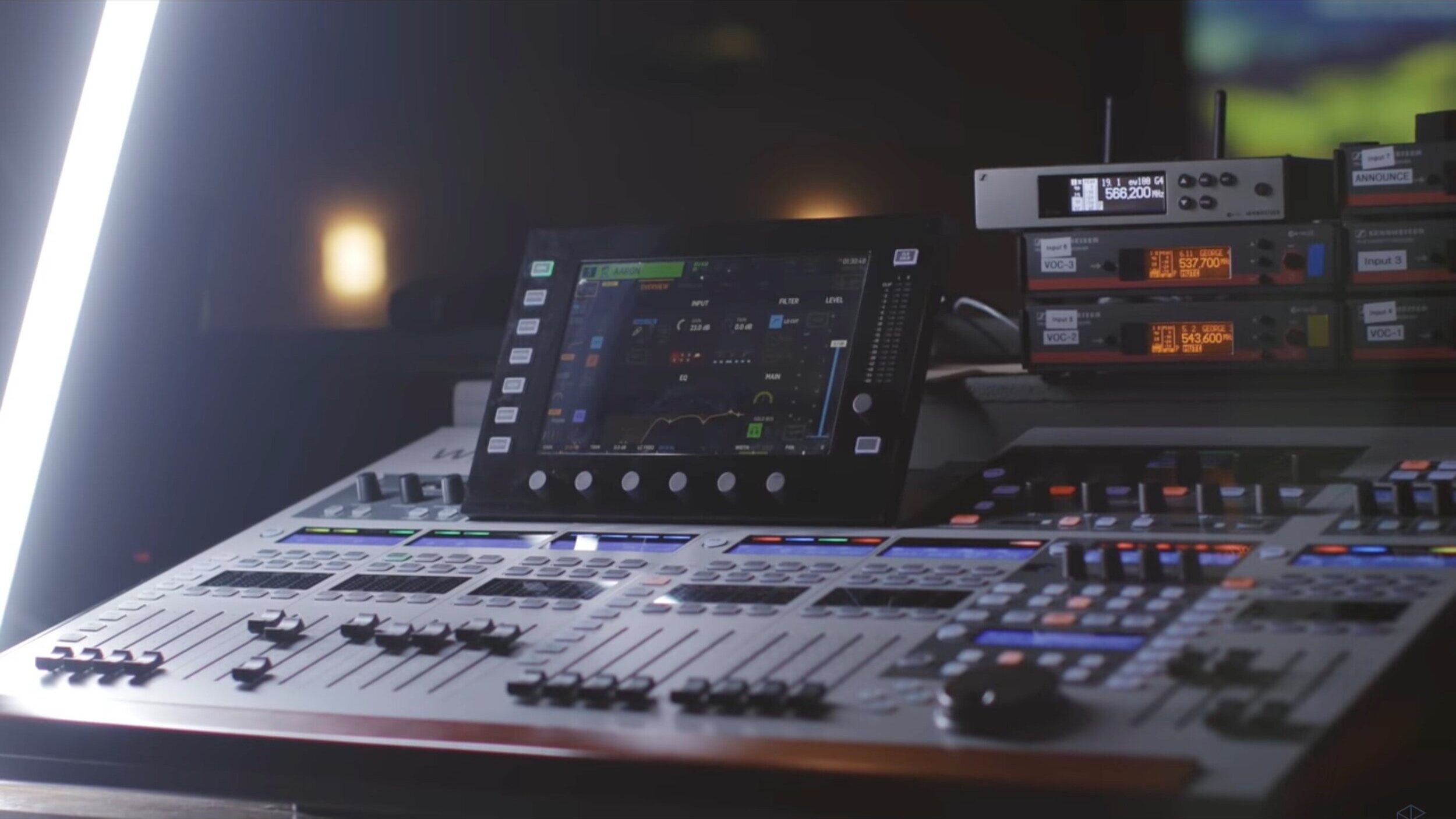Ready to upgrade your church’s mixing console in 2021? Building a new audio system from scratch? Churchfront is here to help.
This post will cover Churchfront’s top two mixing console recommendations for churches in 2021, and by the end, you’ll find out which console takes the crown.
It can feel overwhelming to pick the right gear for a church’s worship ministry. This post will cut through the noise and narrow the decision making down to two mixers that will work great for the vast majority of small to medium size churches.
Need more help improving your church’s audio? Check out The Beginner's Guide to Church Sound, a step-by-step online course for worship tech teams. It's a concise introduction to mixing audio in a worship ministry environment, covering topics such as the anatomy of a sound system, signal processing, and navigating any modern day mixing console.
How much will these cost?
For churches looking to buy a brand new mixing console in 2021, Churchfront has two recommendations. Both of these mixing consoles cost around $3,000. So, when you factor in the cost of a stage box, which is highly recommend, churches will be looking at less than $5,000 for a really robust setup.
Behringer WING
The first recommended church mixing console is the Behringer WING. Here's why it stands out among the pack.
Massive value for the price
Ten years ago, Behringer disrupted the world of digital mixing consoles with the X32. They've done the same thing with the WING. For $3,000, the WING offers forty-eight stereo channels and twenty-eight stereo mix buses. This means churches have plenty of room to accommodate a growing worship ministry.
Intuitive and highly customizable user interface
It's so easy to navigate the routing, the processing, and the layout. It’s actually much more intuitive than the X32 or M32 (older models). And because the layout of the board is customizable, churches can set up the WING exactly for their needs for Sunday services or other events.
It’s easy to upgrade
Because many churches own a Behringer console like the X32 or M32, they likely have stage boxes or personal monitoring devices (like the S32, S16, or P16) that support Behringer gear already. In most cases, these devices are automatically compatible with the WING.
The WING also has an expansion card slot for digital audio networking protocols like Dante. Behringer just announced the Dante expansion card in early 2021, and they will likely release a MADI in a waves sound grid card in the near future. A quick word of advice: Because the WING is a newer model, be patient with Behringer as they continue to release software updates to fix any bugs and add cool new features. The WING will likely become just as widely used as the X32 or M32 over the next few years as it matures and becomes more popular.
Allen and Heath SQ-5,6, or 7
The second recommended church mixing console is the Allen and Heath SQ-5, SQ-6, or SQ-7.
Allen and Heath makes very high-end mixing consoles found in large professional venues. With the SQ line of consoles, the same pro-level digital sound processing is packed into an affordable and portable form factor. The primary difference between the SQ-5, SQ-6, and SQ-7 is simply the size of the board itself. The features and processing power of the various models are identical.
Most churches should consider purchasing the smallest version, the SQ-5, and then invest the dollars saved towards more stage boxes. The Churchfront team does have an SQ-5 in the studio, and here’s what sets the SQ-5, 6, and 7 apart.
High quality of preamps and processing
The sonic quality of the preamps and processing in this console is incredible. It's subtle and hard to describe until it’s experienced firsthand. But if a church really cares about preamps, digital processing, and latency, they should seriously consider an SQ series console.
High quality of hardware
These mixers physically feel pro-level. The faders and knobs are very responsive, and it is evident that this mixer is made of high-quality hardware.
Great remote-control app
Most remote-control companion apps on a phone or tablet seem like an afterthought of the manufacturer. The Behringer apps have always been less than impressive, but that's not the case with the SQ apps. These apps allow users to control the entire console with a tablet or monitor mix with their phone.
A couple other points of note…
The SQ consoles have an expansion card slot for Dante, Waves or MADI.
The touchscreen on the SQ mixing consoles is very responsive and the menus are very intuitive to navigate. It isn’t as intuitive as the WING, but it's still pretty good.
Buying an Allen and Heath SQ console is a solid choice. Churches who use this console will benefit from pristine audio processing and ultra low latency. And, for audiophiles who really care about that stuff, this will be the console for them.
Who Wins?
When it comes to the most value for churches, our team gives the WING first place. The innovations listed above makes this console extremely likable. The WING also has a larger selection of plugins and effects that emulate some of the most popular plugins for EQ, compression and vocal tuning. The SQ console only provides basic channel strip processing and an eight-rack effects engine. The WING provides sixteen effects to work with.
How to make the choice between the WING and SQ consoles
Here’s what it comes down to when making the choice between the WING or the SQ console.
Already have Behringer gear like the stage boxes and P16 personal mixers monitors?
It’s better to go with the WING.
Desire more effects and plugin options?
Go with the WING.
Desire premium digital sound processing and a small form factor?
Go with a SQ console.
There's much more that could be said about the WING and the SQ sound consoles that could sway a church toward one console over the other. But here’s the bottom line: in the end, a church won’t go wrong with either console.
What about the consoles by PreSonus, Yamaha, Soundcraft, Mackie, etc.?
All of these manufacturers have great mixing solutions in the $3,000 to $5,000 range, but they’re simply not the top two consoles Churchfront recommends. However, these mixing consoles deserve an honorable mention. If a church’s heart is set on the Yamaha TF, PreSonus StudioLive, or Soundcraft Si Impact, and these mixers have all the essential features that church needs in a digital console, then it may not be a bad idea to consider these options. But as of the year 2021 that this post is written, the Churchfront team is recommending either the Behringer WING or the Allen and Heath SQ series consoles to the clients that we work with in Worship Ministry School.
The Benefit of Support
Although there are other great consoles out there, the WING and the SQ consoles are really taking off in churches who are upgrading their mixers. One of the benefits of owning one of these two consoles will be the community and the support that surrounds them.
A factor worth taking into consideration is how widely a product is adopted. The team here at Churchfront in the very near future will be developing complete walkthrough videos for these consoles. So definitely check out Worship Ministry School. We walk worship leaders and their team through how to set up these consoles step-by-step for the first time. And we really believe that these particular consoles are going to serve so many churches very, very well over the coming years.
Recommended Peripheral Gear
After acquiring one of these new mixing consoles, it’s important to purchase the right I/O (inputs/outputs) and adequate in-ear monitoring. Here are peripheral gear suggestions for both the WING and the SQ Series.
Setup for the Behringer WING
The Behringer WING has a ton of flexibility for audio inputs and outputs. Most churches will need an AES50 enabled stage box. Consider having at least 32 inputs and 16 outputs available on stage.
Stage Box Options
The Behringer S32 would be a good purchase and is the most economical option.
Want the same connectivity as the S32 but with Midas Pro preamps that offer slightly better sound quality? Buy the Midas DL32.
Behringer S32
Midas DL32
Need stage boxes on each side of the stage? Try purchasing two Behringer S16s, placing them on different sides of the stage. If a church needs stage boxes that have inputs for both quarter-inch and XLR connection, it could pay a little bit more for the Behringer SD16 or SD8 stage boxes.
Monitoring Options
A few options are available for monitoring.
The easiest monitoring solution is likely to pull the in-ear monitor mix directly from the analog mix bus outputs from the stage box and connect them to a wireless transmitter. Another option is using the Midas DP48, which is incredibly powerful. A personal monitor like the Powerplay P16 is an option, too, but the P16 is limited to only 16 channels, so keep that in mind. And be remember that AES50 protocol is recommended if purchasing a personal mixer like the DP48 or P16.
Setup for the Allen and Heath SQ Series
Allen and Heath stage boxes are on the pricier side and come in at almost twice the cost of Behringer stage boxes. However, these stage boxes provide more premium preamps.
Stagebox Options
Churchfront recommends picking up two of the DX168 boxes to provide 32 inputs and 16 outputs on the stage.
Monitoring Options
For in-ear monitoring, consider routing the auxiliary mixes to the analog outputs on the stage boxes. The other option is to pick up an Allen and Heath personal monitoring system like the 16 channel ME-500 or the 40 channel ME-1.
On a Budget?
Here are a few other ideas for churches who cannot put aside $3-5k for a mixing console and gear. Consider picking up a Behringer X32 or X32 compact. There may be a chance Behringer may not be making these consoles for too much longer. Because of this, the prices have recently dropped to less than $2,000. That is insane for what these consoles can do.
Also consider picking up the Behringer XR18. They’re a bit older, but a church that has an even tighter budget and needs portability could give this console a look.
Thanks for taking the time to learn about our recommended mixing consoles for 2021. A ton of gear was listed in this post. So remember to download Churchfront’s free Worship Ministry Toolkit and navigate to the mixing console tab, where all of the items and URLs are listed in one convenient place.
Also, check out the courses Churchfront offers, especially the Beginner's Guide to Church Sound. It's such a great starting place for worship leaders who want to learn more about building and navigating a robust sound system their church. It covers all the fundamentals of processing audio and mixing for worship. It demystifies all the terms like gain, EQ, compression, gates, effects, mixed buses, etc. So go ahead and enroll today.
And be sure to subscribe to Churchfront’s YouTube channel where seemingly endless content can be found on how to help grow a worship ministry.















